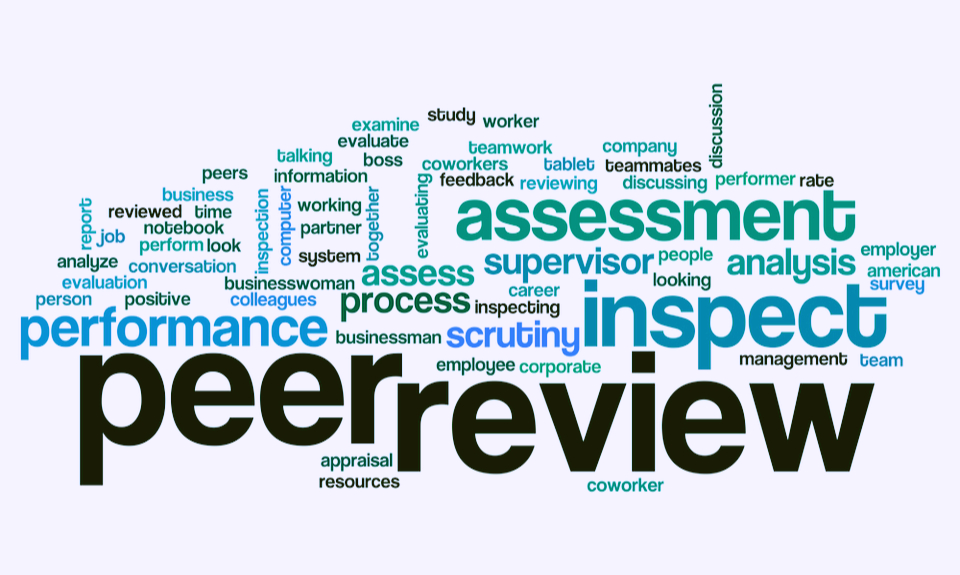As a college freshman in 2002, I remember my first writing class where we had to hand in an essay every two weeks. The week before we handed in the essay, we would have to bring multiple copies of our rough drafts to class and have them be peer reviewed by our classmates. I still remember the insecurities I had in having someone else read my papers, but as the course went on, I came to enjoy having my papers being read by my peers, getting their feedback, and having the chance to improve my writing and thoughts before I handed in my final draft. So, when I started teaching in France, I wanted to bring this pedagogical experience into my classroom knowing first-hand the benefits of using peer assessments as both an instructor and from the point of view of a student.
For example, some of the main benefits for using peer assessments are explained in Liu & Carless 2006:
- The strong evidence that peer feedback enhances student learning
- The approach allows students to have more frequent feedback
- Students who write a feedback are able to demonstrate understanding of the material through analysis and expression
- Writing assessments helps students to develop objectivity in relation to grading criteria, which allows them to better self-evaluate their own work
Although my students did peer assessments in my class, I realized that this pedagogical activity was not as prolific in France as it is in Anglo-Saxon universities. In Toppin 2009, the author shows that peer assessments have had a long history in Anglo-Saxon academic culture with George Jardine, professor at the University of Glasgow from 1774-1826, having described the methods and benefits of using peer assessments for writing. Its underwhelming use in France could be linked to the perceptions that both teachers and students have with regards to assessing peers. Often cited as reasons for not using peer assessments are its lack of reliability and students being uncomfortable with giving grades to peers (Falchikov 1995).
To combat these perceptions, I found some ways to capitalize on the benefits of peer assessments while addressing the issues of reliability and students’ comfort level:
- Focus on peer assessments being a formative assessment rather than a summative assessment
- Ask students to give critical feedback on their peers’ work rather than asking students to give a specific grade
- Allow students to read the feedback from their peers and to revise their assignments based on the feedback given from their peers
- Students should be awarded participation grades to encourage them to complete peer assessments
- Give clear criteria for grading and give students examples of previous work that are graded against these criteria. When using examples avoid using only exemplar work so that students can understand the strengths and weaknesses of low-, middle-, and high-quality work.
It is well known that peer assessments are a fundamental part of academic research. Articles are reviewed for publication by peers, with notes for revisions is necessary. But what is gaining ground is the use of peer assessments in the industry. Many companies now, particularly in consulting firms, such as Capgemini, use peer assessments to validate competencies as a means for employees to advance in their careers. This means that cultivating the skills of giving constructive feedback and applying peer feedback to improve is now an essential career skill. The more we practice these skills with our students now, the easier they can leverage it in their career development in the future.
Moreover, technology has evolved since the time of George Jardine – many tools are available that facilitate the process of peer assessments.

Luxton-Reilly (2009) and Hains-Wesson (2014) provide comprehensive reviews of available peer assessment tools, and some are highlighted below:
AROPA: An online peer review system developed in 2009 by two Computer Science professors at the University of Glasgow. This tool has been used in a wide range of subjects including but not limited to: Accounting, Commercial Law, Health Policy, Paleontology.
Advantages of using AROPA:
- Instructors can monitor the progress of the assignment and at any time can see which students have submitted an assignment and which students have completed a review.
- Student feedback and reviews can be marked themselves, which allows the instructor to help to train students to give constructive feedback
- Submissions can be tagged by topic, which allows students to only assess assignments that are relevant to this topic or area of expertise
- Students are able to see the reviews from other students who have reviewed the same assignment as them
PeerGrade: A free online platform that allows students to submit a variety of work from Word documents to Youtube videos. Once the deadline for submission has been closed, PeerGrade automatically distributes assignments to the students in the course, ensuring all work will be evaluated.
Advantages of using PeerGrade:
- Students are able to evaluate the feedback they receive and to interact with the student(s) who have given the feedback
- Students can easily flag unconstructive feedback or feedback that needs moderation by the instructor
Peerceptiv: The licensed version of SWoRD (Scaffolded Writing and Reviewing in the Discipline), which was created by the Learning Research and Development Center at the University of Pittsburgh, uses accountability and analytics. The design and outcomes for Peerceptive are a direct result from the 10 years of research generated by this tool from the University of Pittsburgh.
Advantages of using Peerceptiv:
- Although initially designed to support writing across the programs, it can also be used for presentations, videos, business plans and other assignments for which there is supposed to be formative feedback
- Students can share their assignments, thus the tool allows students to view writing assignments from different programs.
- Algorithm includes data flow logic and mathematical modeling to prevent bias in peer review results
By and large, peer assessments enable learning, progress and growth and it is no wonder why this nearly two-hundred-year-old learning method has endured for so long. It’s place in academia is well established and is spreading into the industry.
References :
Dochy, F., Segers, M., & Sluijsmans, D. (1999). The use of self-, peer and co-assessment in higher education: A review. Studies in Higher Education, 24(3), 331-350.
Reinholz, D. (2015). The assessment cycle: a model for learning through peer assessment. Assessment & Evaluation in Higher Education, 41(2), 301-315.






